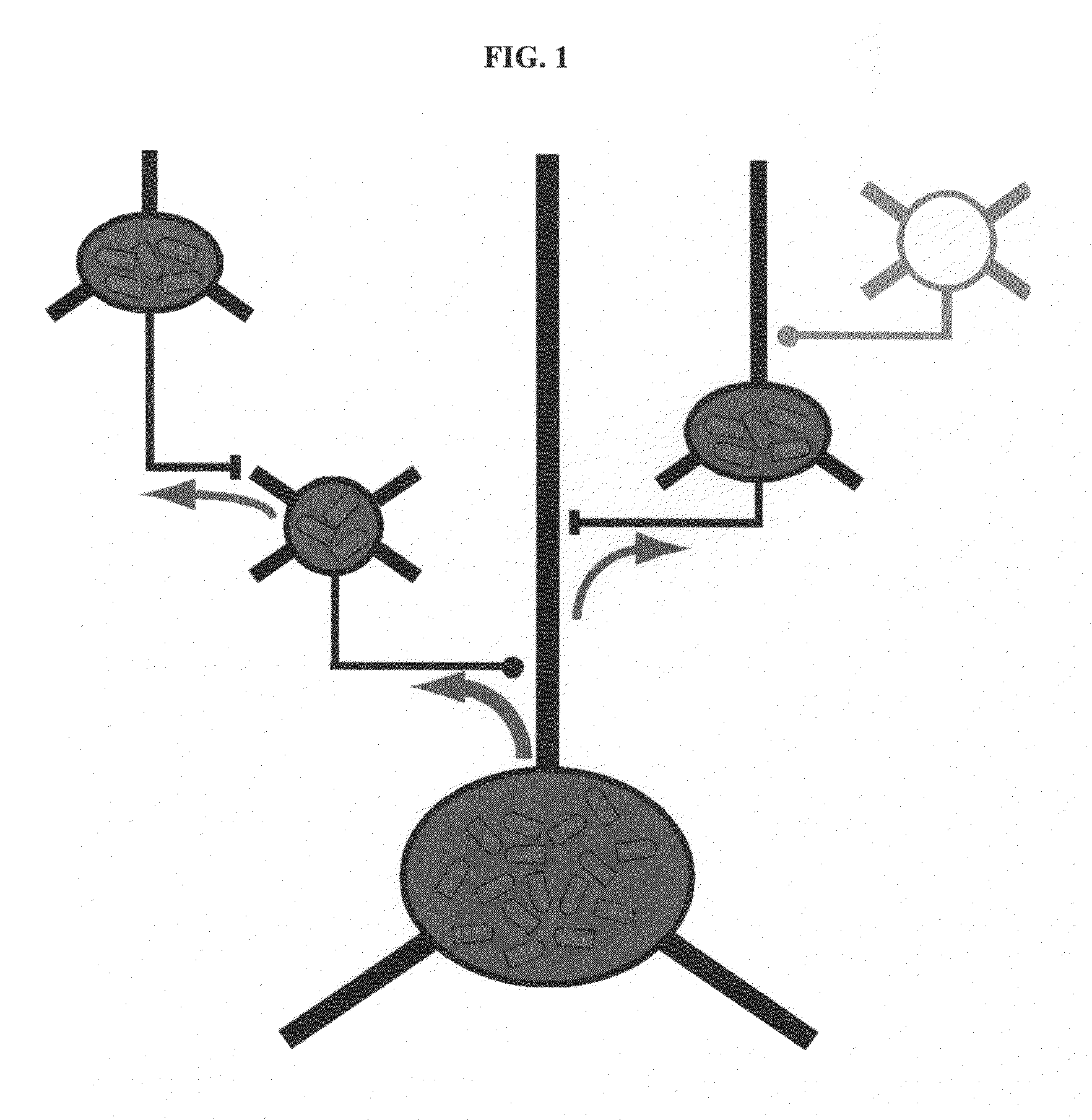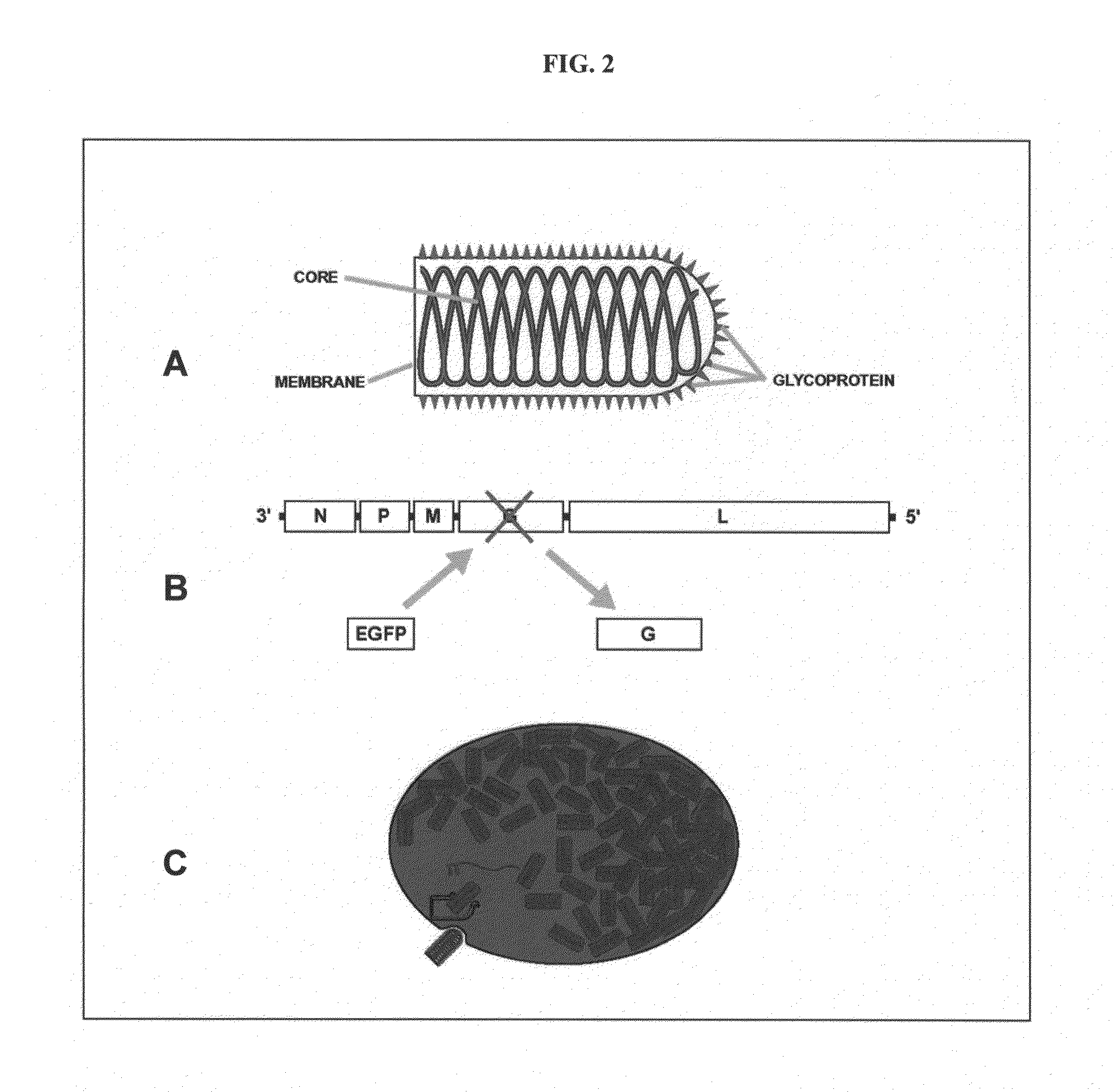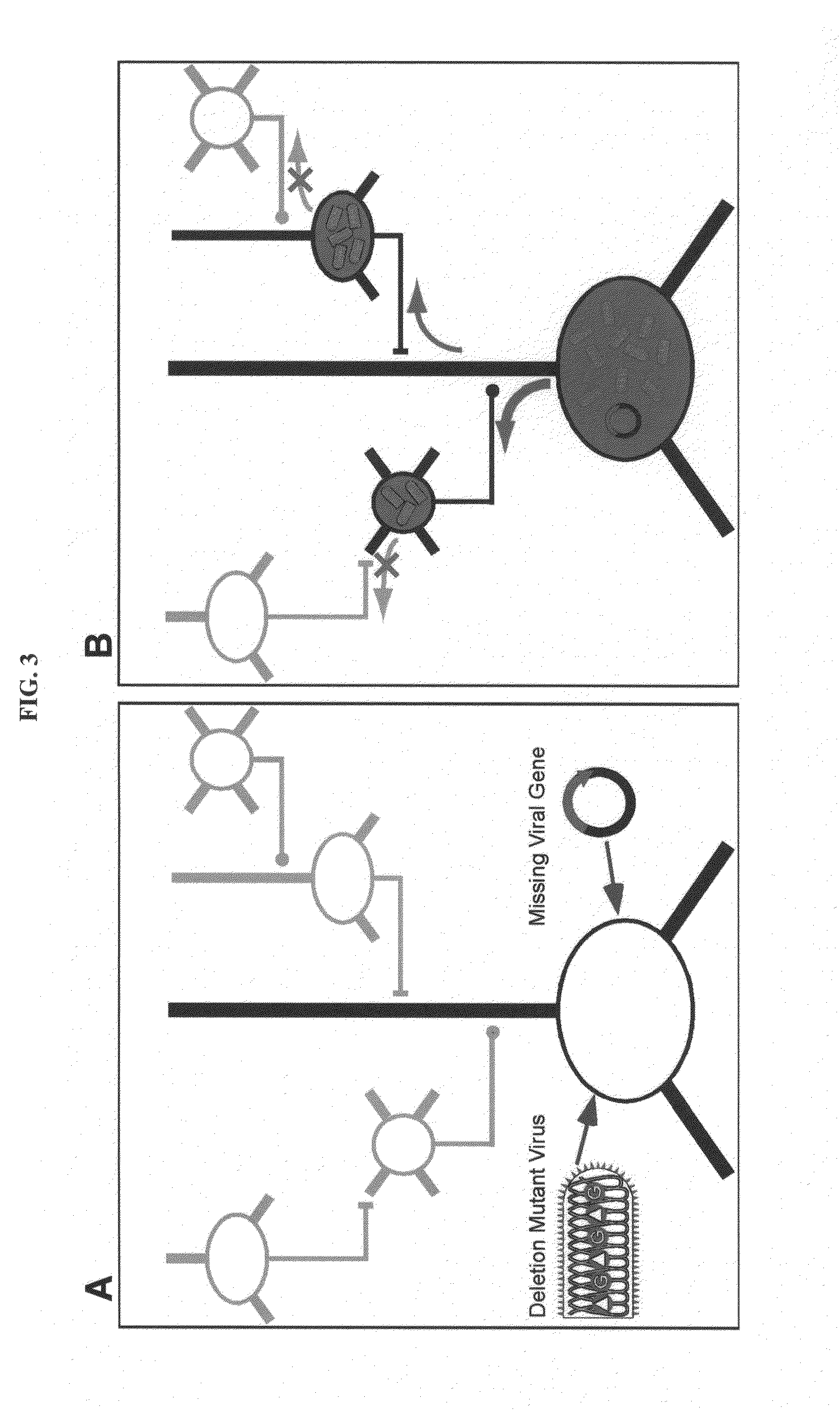Compositions and methods for monosynaptic transport
a monosynaptic and transport technology, applied in the field of monosynaptic transport, can solve the problems of not being able to identify neurons in a wholesale fashion, unable to understand how neural circuits generate perception and behavior, and unable to achieve the effect of specific labelling and/or manipulation
- Summary
- Abstract
- Description
- Claims
- Application Information
AI Technical Summary
Benefits of technology
Problems solved by technology
Method used
Image
Examples
example 1
Construction and Function of a Rabies Virus Glycoprotein Deletion Mutant that Encodes a Marker Gene
[0127]Rabies virus is a neurotropic virus that infects neurons via axon terminals, replicates in the cytoplasm, and spreads between synaptically coupled neurons in an exclusively retrograde direction. A single infectious unit of rabies virus introduced into a brain is sufficient to cause a full-scale case of rabies (Lafay et al., Virol., 183(1):320-30, 1991, Ito et al., J. Virol., 75(19):9121-9128, 2001).
[0128]Mebatsion et al. (Cell, 84(6)941-51, 1996) previously described a rabies virus with the envelope glycoprotein gene deleted from its genome (G− rabies virus). The G− rabies virus was grown in cells where the glycoprotein was provided in trans for incorporation into the viral particles' membranes. The G− rabies virus normally infected neurons with which it came in contact. Because the glycoprotein plays no role in transcription and replication, the G− rabies virus replicated its vi...
example 2
Specific Targeting of and Monosynaptic Labeling by a Rabies Virus Glycoprotein Deletion Mutant
[0145]This Example provides a representative method involving a rabies virus monosynaptic tracer, which tracer can be specifically targeted to a particular population of originating neurons and is transmitted substantially only to neurons monosynaptically connected to the originating neurons. Although this example describes a tracer that includes the envelope protein of the ASLV-A virus (EnvA), one skilled in the art will appreciate that other envelope proteins can be used (such as EnvB), and that other viruses can be used in place of the rabies virus.
[0146]The interaction between subgroup A avian sarcoma and leukosis virus (ASLV-A) and its receptor(s) is highly specific. The envelope protein of the ASLV-A virus (EnvA) can direct virus infection specifically into cells that express the cognate TVA viral receptor (Young et al., J. Virol., 67(4):1811-6, 1993; Bates et al., Cell, 74(6):1043-51...
example 3
Monosynaptically Labeled Cells are Functionally Connected
[0153]This Example demonstrates that neurons labeled as described in Example 3 are functionally connected. Thus, the observed labeling was substantially transsynaptic and not, for instance, nonspecific infection of neighboring cells.
[0154]Paired whole-cell recordings were made from putatively pre- and postsynaptic cells. Cells fluorescent in both red and green channels (red / green cells) were recorded under voltage clamp while nearby green-only cells, held in current clamp, were depolarized to fire action potentials (see, for instance, FIGS. 6A-D and F-I). Synaptic currents in the voltage-clamped red / green cell that were simultaneous with the green cell's action potentials indicated a monosynaptic connection as seen in the example traces in FIGS. 6E and 6J. Non-fluorescent cells at similar distances from the red / green cells were also stimulated as controls. Because the gene gun typically transfected many more than one neuron wi...
PUM
| Property | Measurement | Unit |
|---|---|---|
| volumes | aaaaa | aaaaa |
| volumes | aaaaa | aaaaa |
| inner diameter | aaaaa | aaaaa |
Abstract
Description
Claims
Application Information
 Login to View More
Login to View More - R&D
- Intellectual Property
- Life Sciences
- Materials
- Tech Scout
- Unparalleled Data Quality
- Higher Quality Content
- 60% Fewer Hallucinations
Browse by: Latest US Patents, China's latest patents, Technical Efficacy Thesaurus, Application Domain, Technology Topic, Popular Technical Reports.
© 2025 PatSnap. All rights reserved.Legal|Privacy policy|Modern Slavery Act Transparency Statement|Sitemap|About US| Contact US: help@patsnap.com



